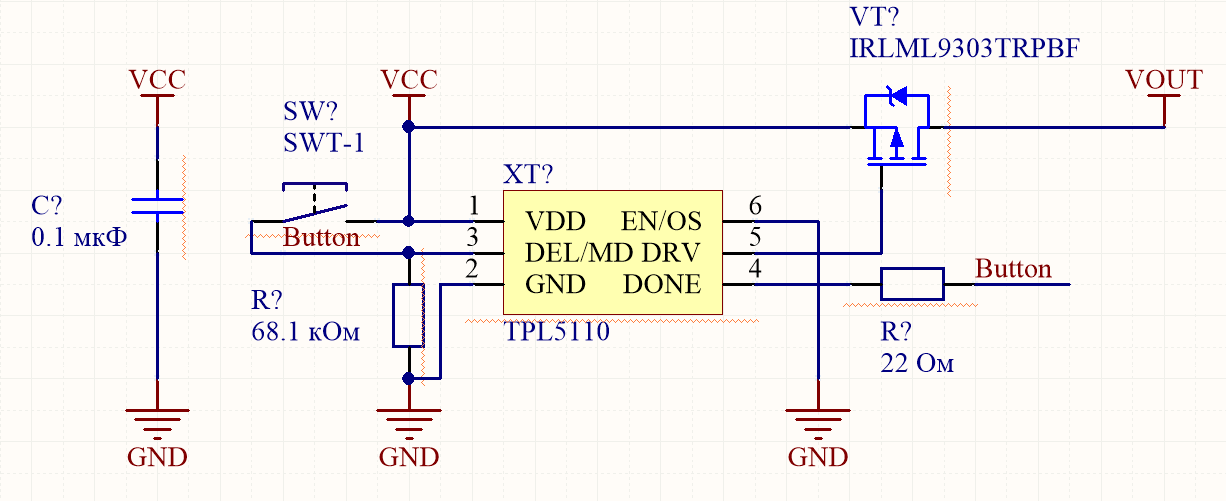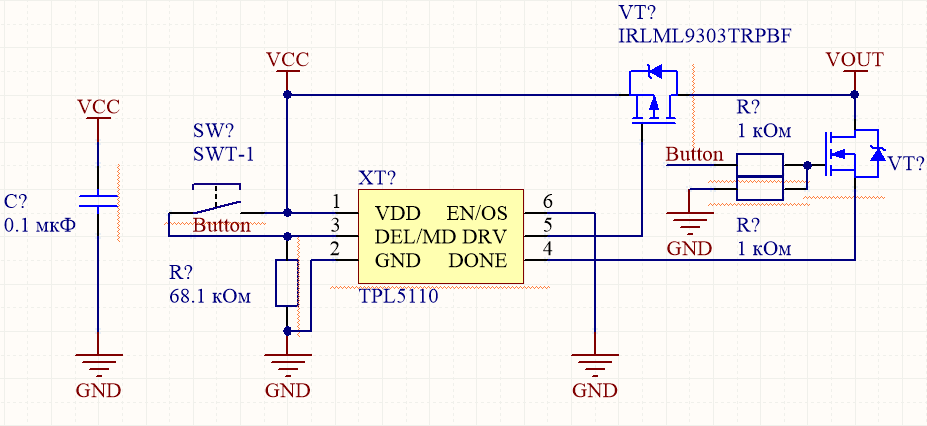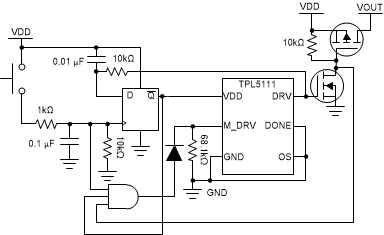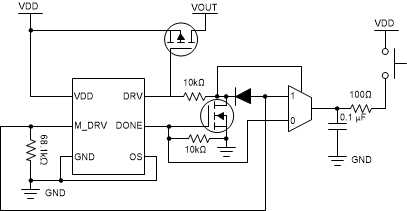Other Parts Discussed in Thread: TPL5111, SN74LVC1G11, SN74LVC1G80, SN74LVC1G3157
Hello.
Please tell me if the circuits are designed correctly
In Figure 1, I would like to design the TPL5110 to start a timer by pressing a button for 15 minutes, and shutdown by pressing the same button when the transistor is on, the DELAY /
M_DRV is not active. Will the circuit below work? will there be a problem when starting the timer when the button is pressed, since a high level will come to the DELAY / pins
M_DRV and DONE (do you need a 22 ohm resistor)?
There is a second implementation of this circuit shown in Figure 2
Figure 1
Figure 2





